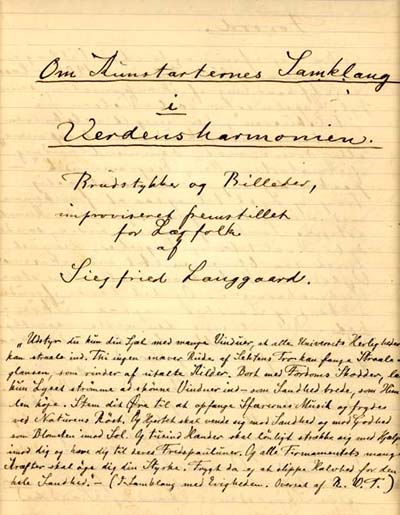The idaes behind the musik
Sensibility and obedience...
Rued Langgaard certainly never learned very much in detail from his parents about the technical side of the composer's work, but was brought up to be open to artistic inspiration, to be odedient and extremely sensitive to the currents, moods and voices of his inner life.
As an example of this sensibility one could mention Langgaard's 'reminiscence' of the time when, at the age of one, he heard the bells of the Holy Grail in Wagner's Parsifal. This reminiscence was in fact first written down in 1952, the year Langgaard died, but even so:
"1894. Parsifal at the Music Society. I (Rued L.) in my pram in the cloakroom in the Koncertpalæet - 'swept away' by the mysterious concluding bells of the Grail (Act I). Felt myself deeply akin to them. - - Hopelessness in the perambulator."

The motto which Siegfried Langgaard selected for
the title page of his manuscript about the harmony of art forms was borrowed from Ralph Waldo Trine's "In Harmony
with Eternity", said to be one of the most read religious books in the world. It is about the divine thread of harmony
which permeates the universe, cutting across religious observance.
This motto is about opening one's senses as wide as possible, as expressed in the following statement: "But equip your
soul with many windows, so that all the wonders of the universe can shine in... Tune your ear to catch the Music of the
Spheres, and rejoice at the voice of nature...".
![]()